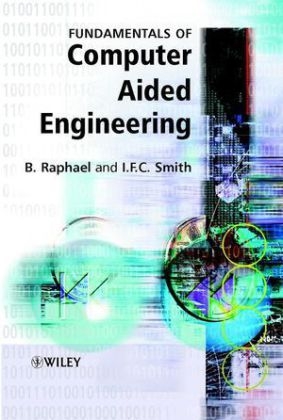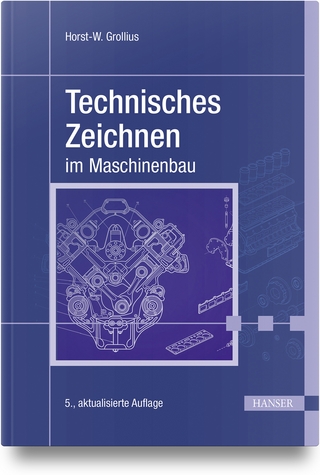
Fundamentals of Computer Aided Engineering
John Wiley & Sons Inc (Verlag)
978-0-471-48715-9 (ISBN)
- Titel ist leider vergriffen;
keine Neuauflage - Artikel merken
It is vital that today's engineers work with computer-based tools and techniques. However, programming courses do not provide engineering students with the skills that are necessary to succeed in their professional career. Here, the authors propose a novel, practical approach that encompasses knowledge assimilation, decision-making capabilities and technical agility, together with concepts in computer-aided engineering that are independent of hardware and software technologies. This book:* Outlines general concepts such as fundamental logic, definition of engineering tasks and computational complexity* Covers numerous representation frameworks and reasoning strategies such as databases, objects, constraints, knowledge systems, search and optimisation, scientific computation and machine learning* Features visualization and distribution of engineering information* Presents a range of IT topics that are relevant to all branches of engineering* Offers many practical engineering examples and exercises Fundamentals of Computer Aided Engineering provides support for all students involved in computer-aided engineering courses in civil, mechanical, chemical and environmental engineering.
This book is also a useful reference for researchers, practising engineers using CAE and educators who wish to increase their knowledge of fundamental concepts.
Foreword. Preface. 1. Fundamental Logic and the Definition of Engineering Tasks. Three Types of Inference. Engineering Tasks. A Model of Information and Tasks. Another Task Definition. The Five Orders of Ignorance. Summary. References. Exercises. 2. Complexity. Program Execution Time versus Task Size. Big Oh Notation. Practical Methods for Determining the Complexity of Algorithms. P, NP and NP-completeness. Summary. Reference. Further Reading. Exercises. 3. Data Structures. Introduction. Definitions. Derived Data Types. Abstract Data Types. Conceptual Structural Design of Buildings. Summary. Further Reading. Exercises. 4. Object Representation and Reasoning. Introduction.Grouping Data and Methods. Definitions and Basic Concepts. Important Characteristics of Objects. Applications outside Programming. An Object-O riented Design Methodology. Summary. References. Further Reading. Exercises. 5. Database Concepts. Introduction. Basic Concepts. Relational Database Systems. Relational Database Design. Transaction Processing. Other Types of Database. Summary. Reference. Further Reading. Exercises. 6. Computational Mechanics. Introduction. From Physical Equations to Practical Systems. Methods for Finding Solutions. Issues in Computer-Aided Engineering. Summary. Reference. Further Reading. Exercises. 7. Constraint-Based Reasoning. Introduction. Terminology. Constraint-Solving Methods. Reasoning with Constraints on Discrete Variables. Reasoning with Constraints on Continuous Variables. Summary. Reference. 8. Optimization and Search. Introduction. Basic Concepts. Classification of Methods. Deterministic Optimization and Search. Stochastic Methods. A Closer Look at Genetic Algorithms. Summary of Methods. References. Further Reading. Exercises. 9. Knowledge Systems for Decision Support. Introduction. Important Characteristics of Knowledge Systems. Representation of Knowledge. Reasoning with Knowledge. Importance of the User Interface. Maintenance of Knowledge. Model-Based Reasoning. Case-Based Reasoning. Summary. Reference. Further Reading. 10. Machine Learning. Introduction. Improving with Experience. Formalizing the Learning Task. Learning Algorithms. A Closer Look at Artificial Neural Networks. Summary. References. Further Reading. Exercises. 11. Geometric Modelling. Introduction. Engineering Applications. Mathematical Models for Representing Geometry. Representing Complex Solids. Applications. Summary. Further Reading. 12. Computer Graphics. Introduction. Tasks of Computer Graphics. Display Devices. Representing Graphics. The Graphics Pipeline. Interactive Graphics. Summary. Further Reading. 13. Distributed Applications and the Web. Introduction. Examples of Client-Server Applications. Distinctive Features of C/S Systems. Client-Server System Design. Advantages of Client-Server Systems. Developing Client-Server Applications. The World Wide Web. Peer-to-Peer Networks. Agent Technology. Summary. Reference. Further Reading. Index.
| Erscheint lt. Verlag | 2.6.2003 |
|---|---|
| Zusatzinfo | Illustrations |
| Verlagsort | New York |
| Sprache | englisch |
| Maße | 169 x 242 mm |
| Gewicht | 548 g |
| Einbandart | Paperback |
| Themenwelt | Informatik ► Weitere Themen ► CAD-Programme |
| Technik | |
| ISBN-10 | 0-471-48715-5 / 0471487155 |
| ISBN-13 | 978-0-471-48715-9 / 9780471487159 |
| Zustand | Neuware |
| Haben Sie eine Frage zum Produkt? |
aus dem Bereich


